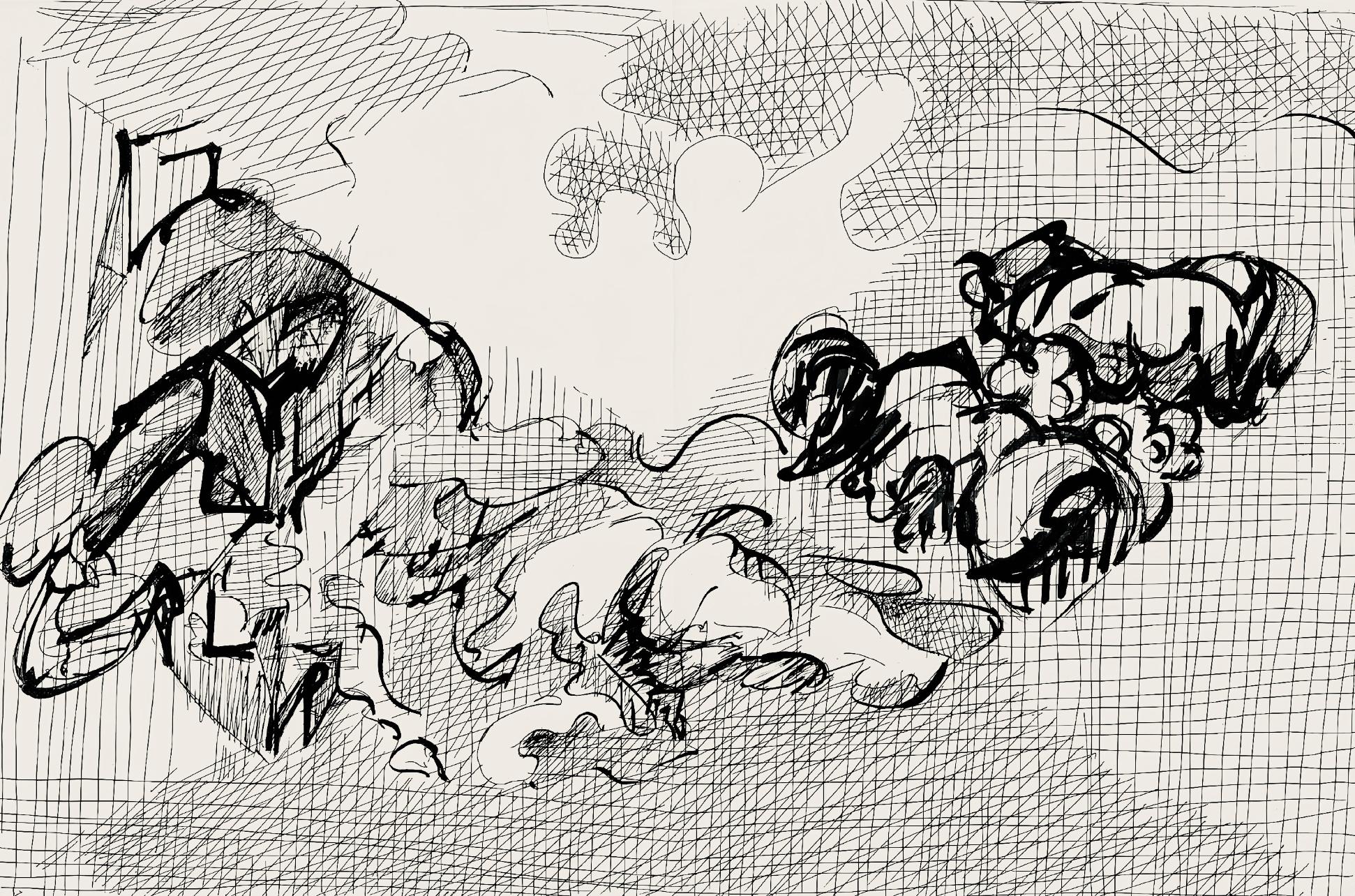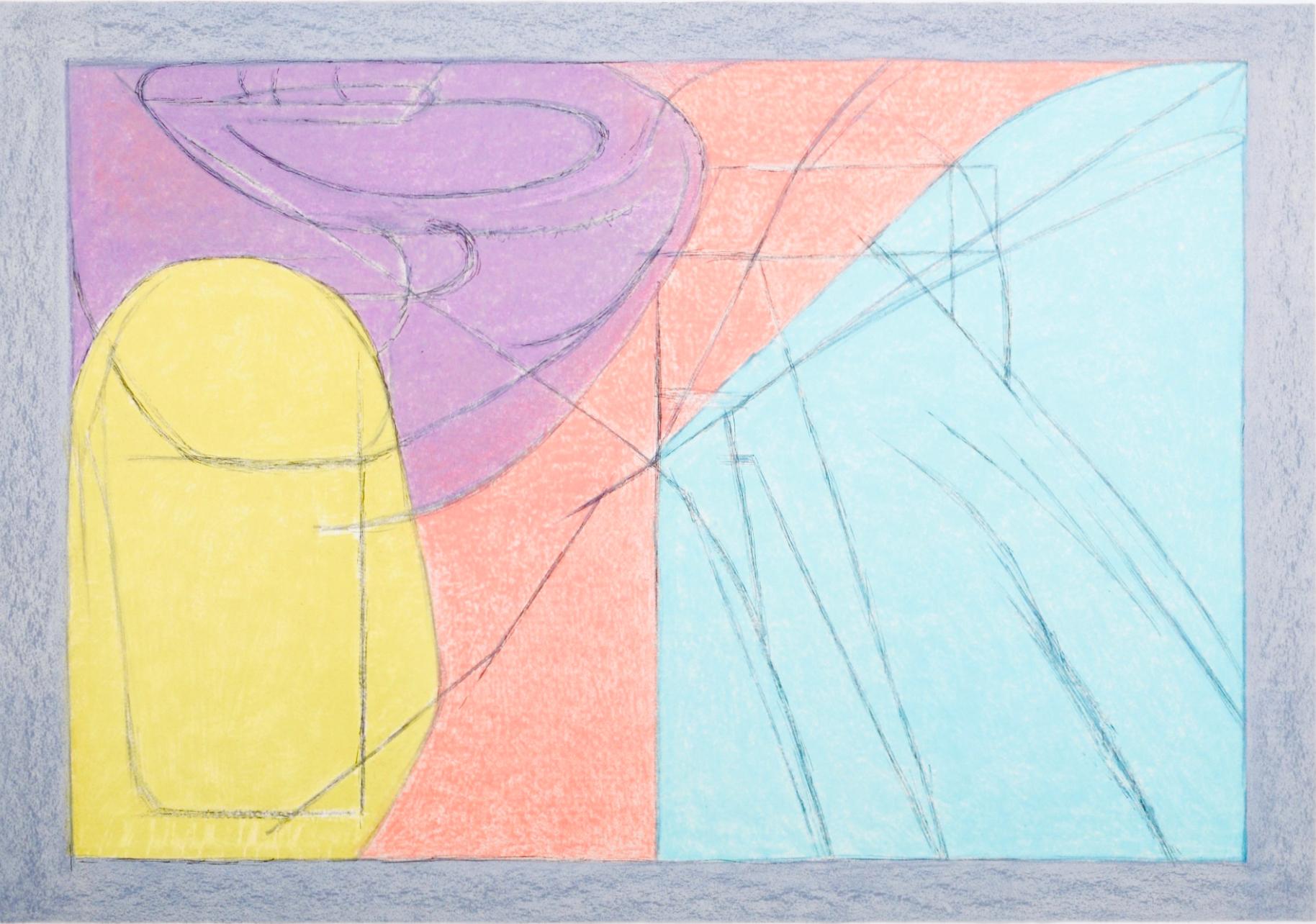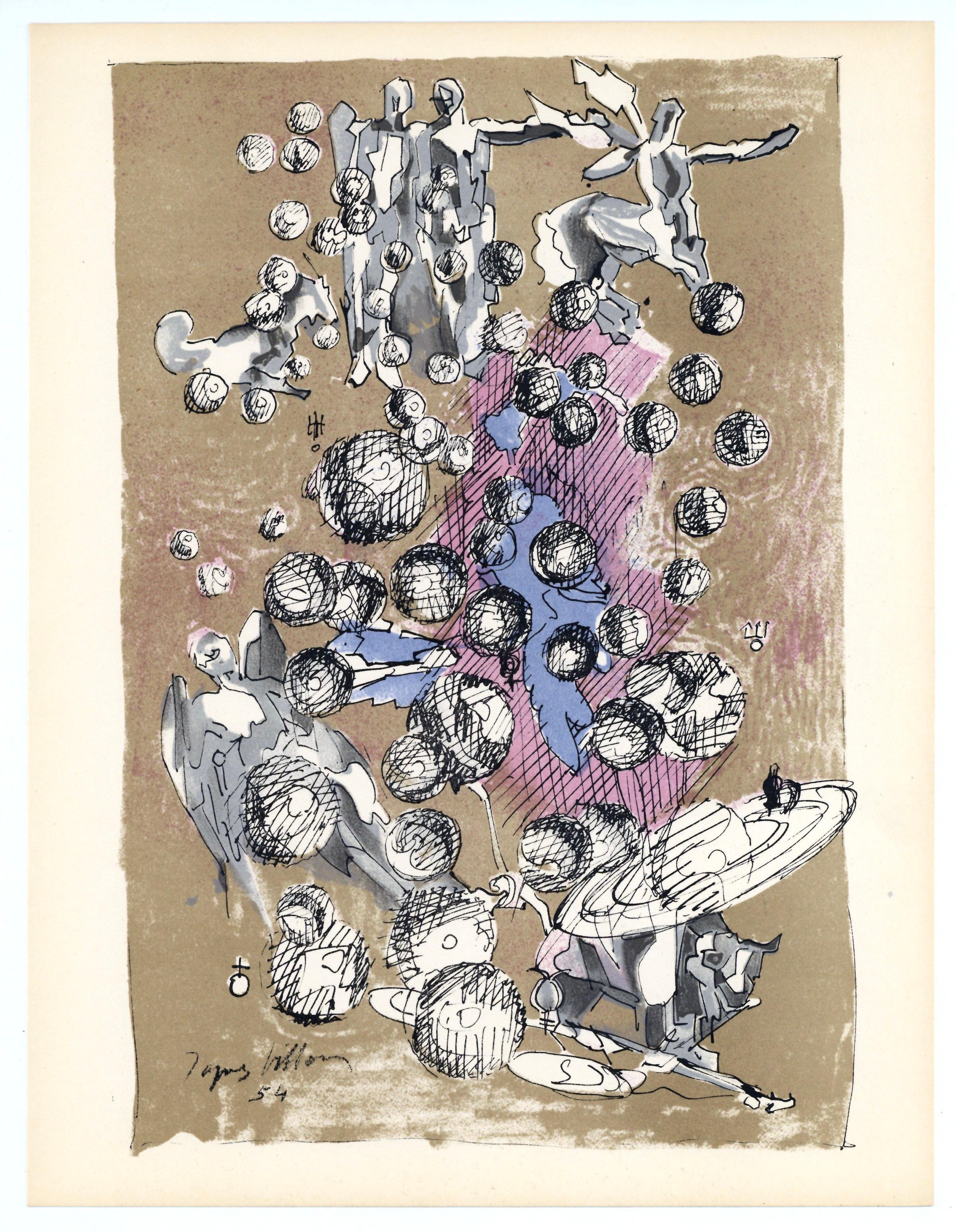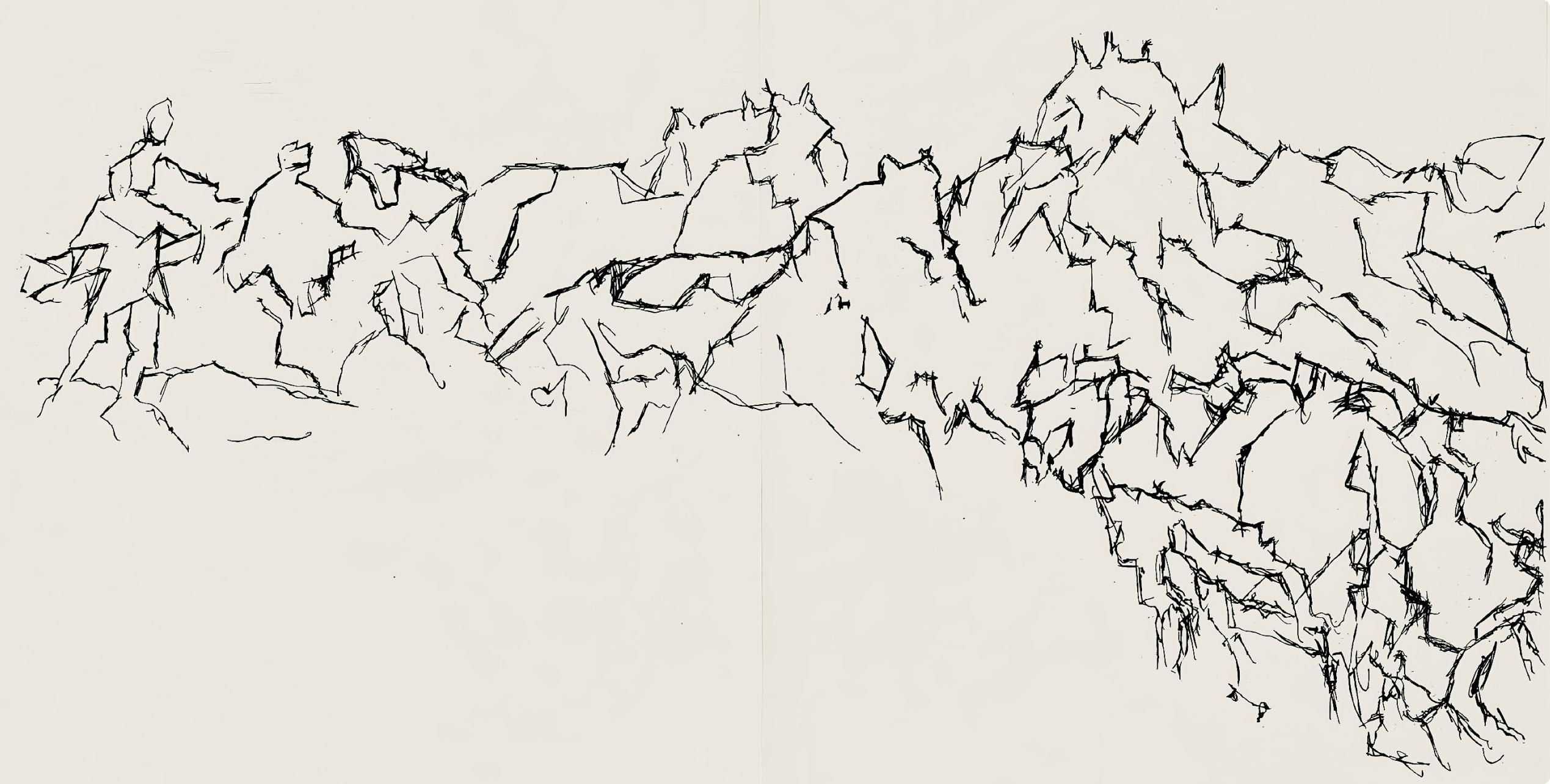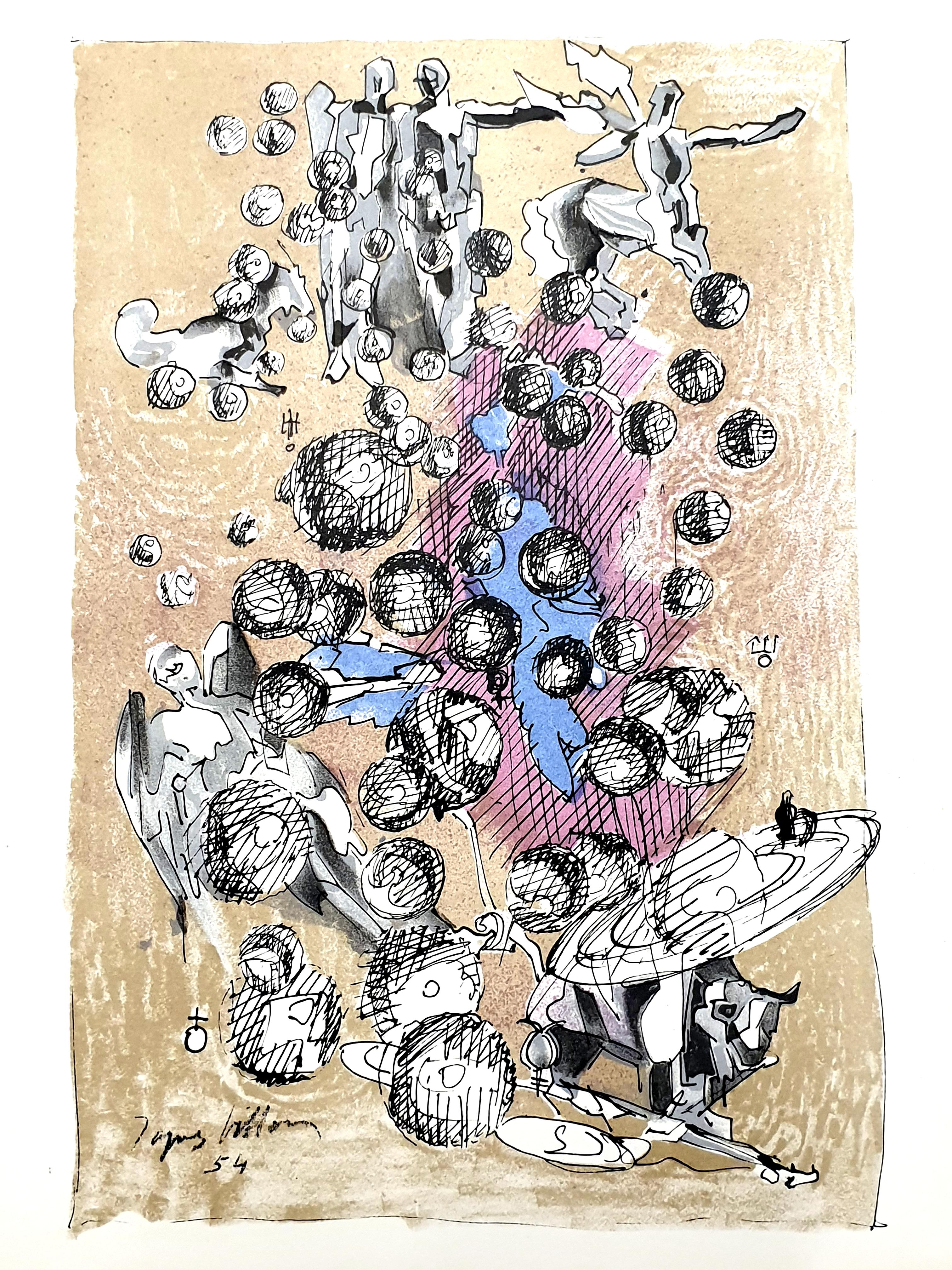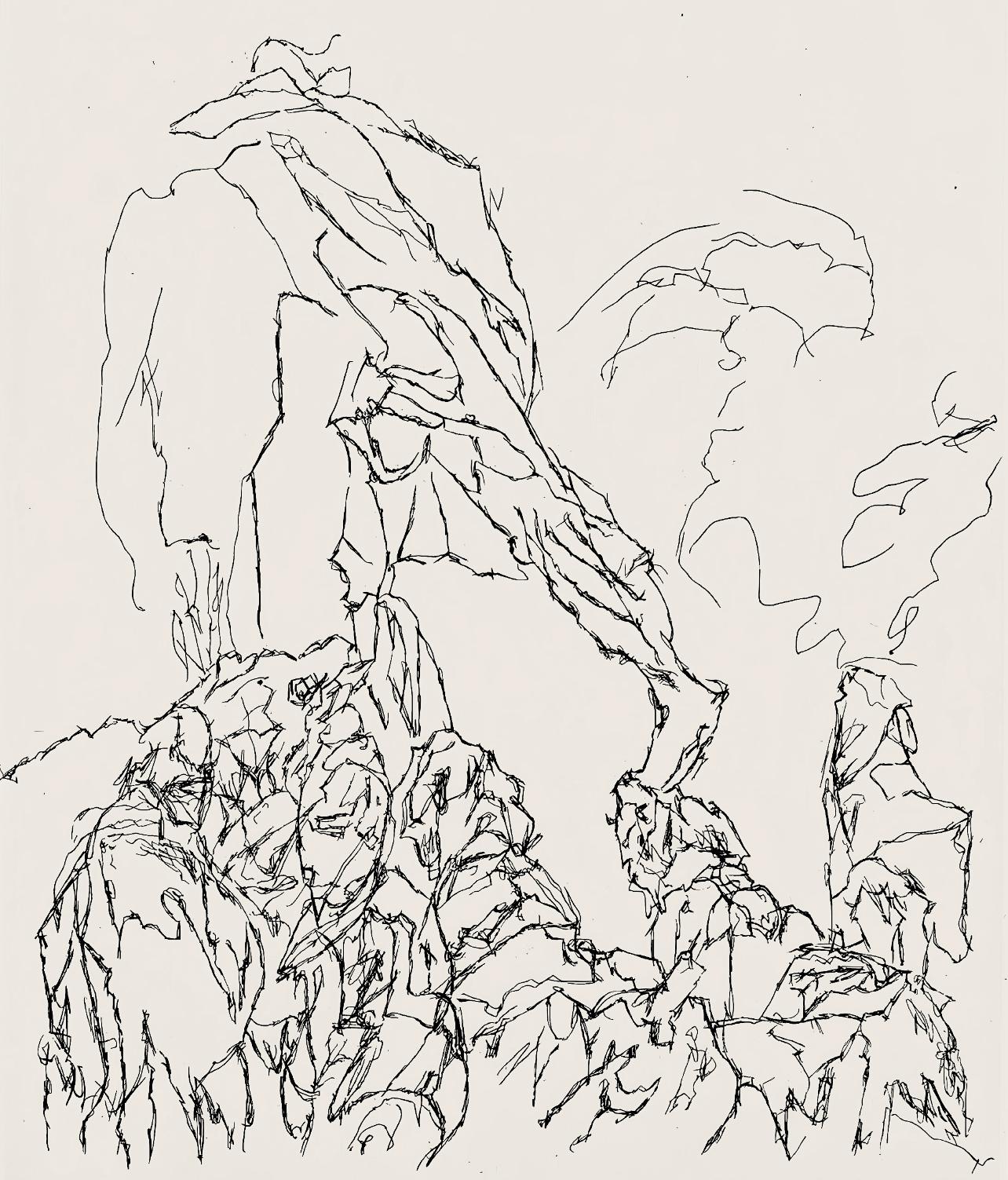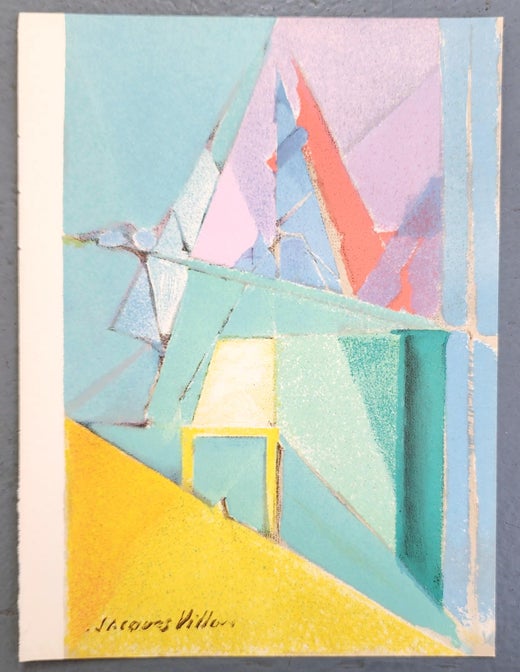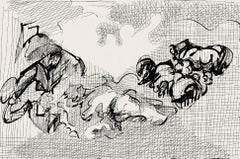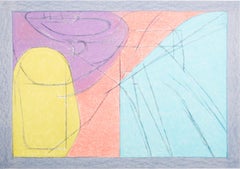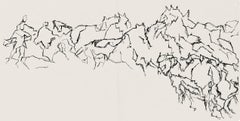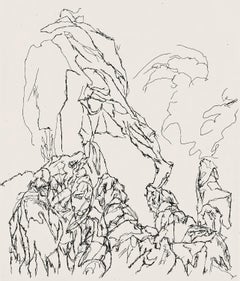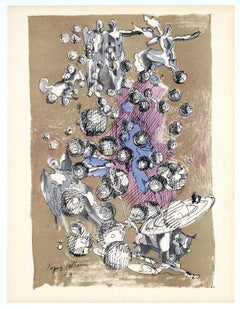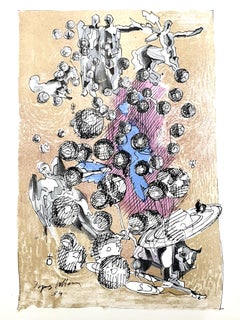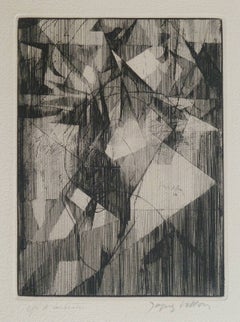Items Similar to Les Mondes (Ginestet-Pouillon 94), Société internationale d'art XXe siècle
Want more images or videos?
Request additional images or videos from the seller
1 of 7
Jacques VillonLes Mondes (Ginestet-Pouillon 94), Société internationale d'art XXe siècle1959
1959
$796
$99520% Off
£604.63
£755.7820% Off
€696.74
€870.9220% Off
CA$1,120.97
CA$1,401.2120% Off
A$1,242.76
A$1,553.4420% Off
CHF 653.12
CHF 816.4020% Off
MX$15,209.29
MX$19,011.6120% Off
NOK 8,156.76
NOK 10,195.9520% Off
SEK 7,655.94
SEK 9,569.9220% Off
DKK 5,200.70
DKK 6,500.8720% Off
About the Item
Lithograph on vélin paper. Paper Size: 12.4 x 9.65 inches. Inscription: Signed in the plate and unnumbered, as issued. Notes: From the album, XXe siècle, Nouvelle série, XXIe Année, N°12 Mal-Juin 1959, Cahiers d'Art bi-annuels publiés sous la direction de G. di San Lazzaro, 1959. Published by Société Internationale d'Art XXe siècle, Paris, under the direction of Gualtieri di San Lazzaro, éditeur, Paris; printed by Mourlot Frères, Paris, 1959. Additional notes: Excerpted from the academic article, “Promoting Original Prints, The Role of Gualtieri di San Lazzaro and XXe Siècle” by Valerie Holman, published in Print Quarterly, XXXIII, 2016, 2, Until recently very little has been written on the Italian author and art publisher Gualtieri di San Lazzaro (1904-75), yet for 50 years he chronicled the life and work of contemporary artists, produced monographs of exceptional quality, and disseminated original prints by modern painters and sculptors through his best-known periodical, XXe Siècle. Although still a relatively unfamiliar figure in the United Kingdom, San Lazzaro is one of the half-dozen great art publishers of the mid-twentieth century who, together with his exemplar, Ambroise Vollard (1866-1939), and those of his own generation, Christian Zervos (1889-1970), Tériade (1889-1983) and Albert Skira (1904-73), chose to base himself in Paris, seeing it throughout his life as the centre of the art world….XXe Siècle, an illustrated periodical, was launched in 1938 and printed in editions of approximately 2,000, each issue containing both photographs and four-colour separation reproductions across a wide spectrum of visual imagery ranging from masterpieces of Western painting to popular prints from the Far East. Its large format, lively design, and close integration of text and image, were immediately striking, but its most innovative feature, introduced at the suggestion of Hans Arp (1886-1966), was the inclusion of original prints by contemporary artists in every issue. With obvious appeal for collectors, XXe Siècle was also designed to introduce a wider, international public to contemporary painting and sculpture through good quality colour reproductions and the immediacy of original prints. Comparable in price to Cahiers d'Art, early issues of XXe Siècle sold out rapidly. While San Lazzaro's own aesthetic preferences tended towards lyric abstraction, he made clear that XXe Siècle was non-partisan [publication ceased during World War II]….in 1951, San Lazzaro relaunched XXe Siècle with thematic issues that were materials based, or centred on a topic of current interest in the visual arts, particularly in Europe: concepts of space, matter, monochrome, mark-making and the sign.' A defining feature of the new series was Italy's artistic dialogue with France for, while San Laz-zaro had originally concentrated on Paris-based painters and sculptors, his aim was to create an international network, to make known the work of French artists in Italy and Italian artists in France, and subsequently extend this bilateral axis to the English-speak-ing world. The artists represented in No. I by an original print were all best known as sculptors: Arp, Laurens, Henry Moore (1898-186) and Marino Marini, San Lazzaro not only sought to show readers the full range of an artist's work, but to encourage the production of prints, a stimulus much appreciated, for example, by Magnelli…. Suffering from failing health, in 1968 San Lazzaro lost overall control of XXe Siècle to Léon Amiel, a printer-publisher who had provided financial backing and helped with distribution in America." Thematic issues now ceased and were replaced by a 'panorama' of the year, but San Lazzaro was still active as a publisher of books and albums of prints….Shortly after his death, San Lazzaro himself was the subject of two exhibitions: 'Omaggio a XXe Siècle' in Milan in December 1974 centred on graphic work by those artists closest to him late in life, while 'San Laz-zaro et ses Amis' at the Musée d'Art Moderne de la Ville de Paris in 1975 featured work by all those whose work he had promoted for more than 50 years: Arp, Calder (1898-1976), Capogrossi, Chagall, Sonia Delau-nay, Dubuffet, Estève, Lucio Fontana (1899-1968), Gili-oli (1911-77), Magnelli, Marini, Miró, Moore and Poliakoff. This exhibition was seen by one of his closest colleagues as an indirect portrait of San Lazzaro, a complex man whose modesty and reserve masked his unremitting drive to extend international appreciation of contemporary art, and to bring the reading public closer to its making through the medium of print.
JACQUES VILLON (1875-1963), also known as Gaston Duchamp, was a French Cubist and abstract painter, printmaker, and the eldest brother of Marcel Duchamp. Among Villon's greatest achievements as a printmaker was his creation of a purely graphic language for cubism – an accomplishment that no other printmaker, including his fellow cubists Pablo Picasso or Georges Braque, could claim. After studying law he settled in Paris in 1894, where he worked in Cormon's studio and earned his living as a draughtsman. During this period he contributed to the magazines Le Chat noir, Gil Blas, Lassiette au Beurre and Le Courrier franqais. In 1904 he became a founder member of the Salon d'Automne, in which he regularly exhibited. In 1912 he helped to organize the Section d'Or exhibition, and in 1913 took part in the International Exhibition of Modern Art (the Armory Show) in New York, at which he sold nine pictures. Between 1921 and 1930 he produced thirty-four prints for Architectures. In 1937 he won an award for painting and graphic art at the International Exhibition of Art in Paris. In 1940-1 he was in Bernay with Mme Andre Mare. In 1944 he became friendly with Louis Carre and exhibited in his gallery. In 1949 he won the Grand Prix for graphic art in Lugano, and in 1950 took part in the Twenty fifth Biennale in Venice, and won the Carnegie Prize in Pittsburgh. In 1954 he was made Commandeur de la Legion d' Honneur and Commandeur des Arts et Lettres. In 1956 he won the Grand Prix for painting at the Twenty-eighth Biennale in Venice and in 1958 the Grand Prix at the International Exhibition in Brussels. In 1961 he was made an honorary member of the American Academy of Arts and Letters and the National Institute of Arts and Letters in the United States. During his early period, when he worked primarily as a draughtsman and etcher, Villon was influenced by Steinlen and Toulouse-Lautrec. In 1906 he became more interested in painting, and during the next five years took his lead from Degas and the Fauves. Then, in 1911, he embraced Analytical Cubism, which satisfied his need for order and discipline. Subsequently, he tried to develop a new style of painting based on mathematical proportions corresponding to the golden section. Later, between 1919 and 1929, he painted abstracts, in which he sought to represent the essence of objects by means of signs and not properties. During this period he restricted his palette to greys and browns. In 1930 he began to use colours from the prismatic sequence of tones. After this abstract phase Villon reverted, in 1933, to natural forms and pure colours. In c. 1950 he stopped painting landscapes and figure compositions, and evolved a new and carefully thought-out form of abstract painting, for which he used cool colours.In May 2004, an Jacques Villon, L'Acrobate, sold at Sotheby's for $1,296,000 USD, setting a world record for the artist.
- Creator:Jacques Villon (1875-1963, French)
- Creation Year:1959
- Dimensions:Height: 12.4 in (31.5 cm)Width: 9.65 in (24.52 cm)
- Medium:
- Movement & Style:
- Period:
- Condition:
- Gallery Location:Southampton, NY
- Reference Number:1stDibs: LU1465216671762
Jacques Villon
Jacques Villon was born Gaston Duchamp in 1875. He was the oldest brother of the artists Marcel Duchamp, Suzanne Duchamp-Crotti and the sculptor Raymond Duchamp-Villon. Initially a law student, in 1894 he went to Paris to study art. It was there that he met Henri Toulouse-Lautrec and other influential artists in Paris, and changed his name to Jacques Villon, after the poet. Villon made prints of some of the most well-known belle-époque portraits and genre scenes of the early twentieth century. Around 1911, he came under the influence of Picasso and other cubists, and became a leading exponent of the style, exhibiting in the 1913 Armory Show in New York. In 1922, the Galerie Bernheim-Jeune commissioned Villon to produce a series of color aquatints after 38 major nineteenth- and twentieth-century paintings. This series included works by Pierre Auguste Renoir, Henri Matisse, Pablo Picasso, Paul Cezanne, Georges Braque, Raoul Dufy, Amadeo Modigliani, Edouard Manet, Pierre Bonnard, and others. Artists who were alive at the time of the printing collaborated with Villon, and signed the prints. The project took ten years to complete. Several of these prints are valued highly today, and some went on to be reproduced by the Louvre Museum as photo-etchings. Villon's 'cubist' etchings, with their characteristic cross-hatching, are amongst the most renowned prints of the twentieth century. Jacques Villon's long career brought him fame. The diverse nature of his paintings, from end-of-the-century portraits to cubist and abstract styles to graphic works, made him a major figure in twentieth-century art. He was made a Grand Officer of the Légion d'Honneur, and upon his death in 1963, and he was given a state funeral.
About the Seller
4.9
Platinum Seller
Premium sellers with a 4.7+ rating and 24-hour response times
Established in 1978
1stDibs seller since 2021
1,177 sales on 1stDibs
Typical response time: <1 hour
- ShippingRetrieving quote...Shipping from: Southampton, NY
- Return Policy
Authenticity Guarantee
In the unlikely event there’s an issue with an item’s authenticity, contact us within 1 year for a full refund. DetailsMoney-Back Guarantee
If your item is not as described, is damaged in transit, or does not arrive, contact us within 7 days for a full refund. Details24-Hour Cancellation
You have a 24-hour grace period in which to reconsider your purchase, with no questions asked.Vetted Professional Sellers
Our world-class sellers must adhere to strict standards for service and quality, maintaining the integrity of our listings.Price-Match Guarantee
If you find that a seller listed the same item for a lower price elsewhere, we’ll match it.Trusted Global Delivery
Our best-in-class carrier network provides specialized shipping options worldwide, including custom delivery.More From This Seller
View AllComposition (Ginestet/Pouillon 42-64), Hésiode, Les Travaux et les Jours
By Jacques Villon
Located in Southampton, NY
Etching on vélin de Rives paper. Unsigned and unnumbered, as issued. Good condition, with centerfold, as issued. Notes: From the folio, Hésiode, Les Travaux et les jours. Eaux-fortes...
Category
1960s Modern Landscape Prints
Materials
Etching
$1,916 Sale Price
20% Off
Free Shipping
Composition (Ginestet/Pouillon 65-72), Jacques Villon, Huit lithographies
By Jacques Villon
Located in Southampton, NY
Lithograph on vélin d’Arches paper. Signed in pencil and unnumbered, as issued. Good condition. Notes: From the folio, Jacques Villon, Huit Lithographies Originales, 1962. Published ...
Category
1940s Modern Landscape Prints
Materials
Lithograph
$5,196 Sale Price
20% Off
Free Shipping
Composition (Ginestet/Pouillon 42-64), Hésiode, Les Travaux et les Jours
By Jacques Villon
Located in Southampton, NY
Etching on vélin de Rives paper. Unsigned and unnumbered, as issued. Good condition, with centerfold, as issued. Notes: From the folio, Hésiode, Les Travaux et les jours. Eaux-fortes...
Category
1960s Modern Landscape Prints
Materials
Etching
$1,916 Sale Price
20% Off
Free Shipping
Composition (Ginestet/Pouillon 42-64), Hésiode, Les Travaux et les Jours
By Jacques Villon
Located in Southampton, NY
Etching on vélin de Rives paper. Unsigned and unnumbered, as issued. Good condition. Notes: From the folio, Hésiode, Les Travaux et les jours. Eaux-fortes de Jacques Villon, 1962. Pu...
Category
1960s Modern Landscape Prints
Materials
Etching
$1,836 Sale Price
20% Off
Free Shipping
Composition (Ginestet/Pouillon 65-72), Jacques Villon, Huit lithographies
By Jacques Villon
Located in Southampton, NY
Lithograph on vélin d’Arches paper. Signed in pencil and unnumbered, as issued. Good condition. Notes: From the folio, Jacques Villon, Huit Lithographies Originales, 1962. Published ...
Category
1940s Modern Landscape Prints
Materials
Lithograph
$5,196 Sale Price
20% Off
Free Shipping
Composition (Ginestet/Pouillon 65-72), Jacques Villon, Huit lithographies
By Jacques Villon
Located in Southampton, NY
Lithograph on vélin d’Arches paper. Signed in pencil and unnumbered, as issued. Good condition. Notes: From the folio, Jacques Villon, Huit Lithographies Originales, 1962. Published ...
Category
1940s Modern Landscape Prints
Materials
Lithograph
$5,196 Sale Price
20% Off
Free Shipping
You May Also Like
original lithograph
By Jacques Villon
Located in Henderson, NV
Medium: original lithograph. Printed in 1959 by Mourlot and published in Paris for the art revue XXe Siecle (issue number 12). Sheet size: 12 3/8 x 9 1/2 inches (313 x 240 mm). Signe...
Category
1950s Abstract Prints
Materials
Lithograph
Jacques Villon - Dance of the Universe - Original Lithograph
By Jacques Villon
Located in Collonge Bellerive, Geneve, CH
Jacques Villon - Dance of the Universe - Original Lithograph
From the literary review "XXe Siècle"
1959
Dimensions: 32 x 24 cm
Publisher: G. di San Lazzaro.
Jacques Villon (1875 -...
Category
1950s Modern Abstract Prints
Materials
Lithograph
Le Petit Équilibriste
By Jacques Villon
Located in London, GB
JACQUES VILLON 1875-1963
(Gaston Duchamp) Damville 1875-1963 Paris (French)
Title: Le Petit Équilibriste, 1914
Technique: Original Hand Signed and Numbered Etching with full m...
Category
1910s Cubist Abstract Prints
"Pastoral"
By Jacques Villon
Located in San Francisco, CA
Artist: Jacques Villon (French, 1875-1963)
Title: "Pastoral" From the suite "Les Bucoliques"
Year: 1953
Medium: Color lithograph
Paper: Japan nacre
Image size: 8 x 19 inches
Sheet size: 22.25 x 18.5 inches
Signature: Hand signed in pencil by the artist
Edition: From the edition of 245
Publisher: Scripta and Picta
Printer: Fernand Mourlot, Paris
Condition: Excellent
Frame: Unframed
About the artist.
Jacques Villon was born Gaston Duchamp on July 31, 1875, in Damville, Normandy. His family is one of remarkable artistic repute; he and his three siblings Marcel Duchamp, Raymond Duchamp...
Category
Mid-20th Century Cubist Figurative Prints
Materials
Lithograph
Intimité
By Jacques Villon
Located in Middletown, NY
Paris: Mourlot Press, 1964.
Lithograph in colors on Velin d’Arches paper, 6 3/4 x 10 inches (170 x 253 mm), full margins. Published by Fernand Mourlot and Jean Adhemar, 1964. In ver...
Category
Mid-20th Century Modern Abstract Prints
Materials
Lithograph, Handmade Paper
Ajournement I
By Jacques Villon
Located in San Francisco, CA
Artist: Jacques Villon
Title: Ajournement I
Year: 1959
Medium: Etching
Edition: Inscribed Bon A Tirer (Trial Proof) in pencil
Paper Wove
Image size: 5.5 x 6.5 inches
Signature: H...
Category
Mid-20th Century Abstract Abstract Prints
Materials
Etching
More Ways To Browse
Shigeki Kuroda
Thomas Mcknight Venice
Vintage Posters Hundertwasser
Zita Hastings
Peter Max Liberty And Justice For All
Peter Schmidt On Sale
Prescott Chaplin
Sarah Slappey
Patrick Nagel On Sale
Robert Overman Hodgell
Roger Medearis On Sale
Tomikichiro Tokuriki On Sale
Phoebe Cole
Steffen Thomas
Susan Mcgovney Hansen
Vadik Suljakov
Robert Heindel
Sempe Print
